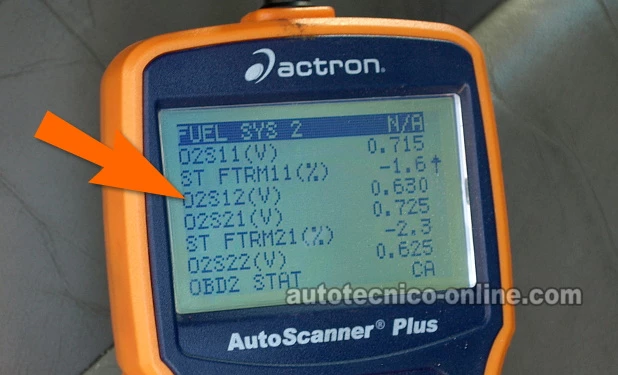TEST 1: Checking For A Broken Catalytic Converter

Let's start by checking if the filter element inside the catalytic converter is broken. This filter element is located inside the converter and is responsible for oxidizing (cleaning) the harmful gases from the exhaust gases.
If the catalytic converter's filter element is broken, you'll hear noises from the pieces moving inside the converter when you tap it.
IMPORTANT: Perform this check when both the engine and the converter are completely cold to avoid burns. Don't attempt this if the engine or the catalytic converter are hot!
Here are the steps for the test:
- 1
Lift the vehicle and place it on jack stands. The catalytic converter can only be accessed from underneath the vehicle.
IMPORTANT: Use jack stands to keep your Neon elevated. Don't rely on the jack alone to keep it lifted!
IMPORTANT: The engine and the catalytic converter should be completely cold before performing this test. - 2
Tap the catalytic converter.
When I perform this test, I use the palm of my open hand or a large rubber mallet. - 3
Listen for rattling noises when you tap the catalytic converter.
If the filtering element inside the catalytic converter is broken into pieces, you'll hear a rattling noise when you tap it.
Let's take a look at what your test results mean:
CASE 1: The filtering element is broken into pieces. This confirms that the catalytic converter is faulty and needs to be replaced.
Before replacing the catalytic converter, you need to make sure of the following:
- The ignition system is not causing cylinder misfires that are allowing raw gasoline to enter the exhaust pipe.
- The intake manifold gasket isn't letting engine coolant/antifreeze leak into the cylinders.
- The engine doesn't have a faulty fuel injector.
The purpose of these checks is to see if a rich air/fuel mixture exists and is the culprit behind the converter's failure. If you find any of these issues present in your vehicle, you'll need to fix them before replacing the catalytic converter or it'll fail.
CASE 2: The filtering element is NOT broken into pieces. This is the correct and expected test result.
The next step is to check the performance of the rear oxygen sensor. For this test, go to: TEST 2: Checking The Performance Of The Rear Oxygen Sensor.
TEST 2: Checking The Performance Of The Rear Oxygen Sensor

Before considering replacing the catalytic converter, it's important to check its performance. This process involves analyzing the voltage generated by the rear oxygen sensor (located after the catalytic converter).
By checking the reading of the rear oxygen sensor, you can determine if the catalytic converter is still functioning correctly.
Specifically, if the converter isn't working correctly, the rear oxygen sensor will register a constant voltage above 0.5 Volts (500 milliVolts).
To perform this test, you'll need a scan tool capable of displaying real-time data ('Live Data'). You don't need a an expensive professional level scan tool; a generic one with 'Live Data' functionality will do.
These are the test steps:
- 1
Connect the scan tool to your Neon's diagnostic port.
- 2
Start and run the engine.
NOTE: Let the engine idle for at least 15 minutes before moving on to the next step. This will allow the catalytic converter to activate. - 3
Once you're in the data stream function on your scan tool, look for the line identified as O2S12. This is where you can observe the 'live' output voltage reading of the rear oxygen sensor.
NOTE: It's the rear oxygen sensor that reports the activity of the catalytic converter. - 4
Take a look at the voltage reading of the rear oxygen sensor.
The voltage should fluctuate between 100 milliVolts to 500 milliVolts (0.1 to 0.5) while the engine is running.
NOTE: Unlike the front oxygen sensor, whose output signal constantly and rapidly varies between 100 milliVolts and 900 milliVolts (0.1 to 0.9), the reading from the rear oxygen sensor generally varies between 100 milliVolts and 500 milliVolts.
Let's take a look at what your test results mean:
CASE 1: Oxygen sensor voltage is consistently above 0.5 Volts. This generally confirms that the catalytic converter has failed. But I suggest one more test to be sure.
The next step is to check the rear oxygen sensor itself to make sure it's not faulty. For the next test, go to: TEST 3: Manually Inducing A Lean Air/Fuel Mixture.
CASE 2: Oxygen sensor voltage IS NOT consistently above 0.5 Volts. This is generally the correct and expected result and usually indicates that, for the time being, the catalytic converter is working correctly.
I suggest you check the performance of the rear oxygen sensor with the following test: TEST 3: Manually Inducing A Lean Air/Fuel Mixture.

